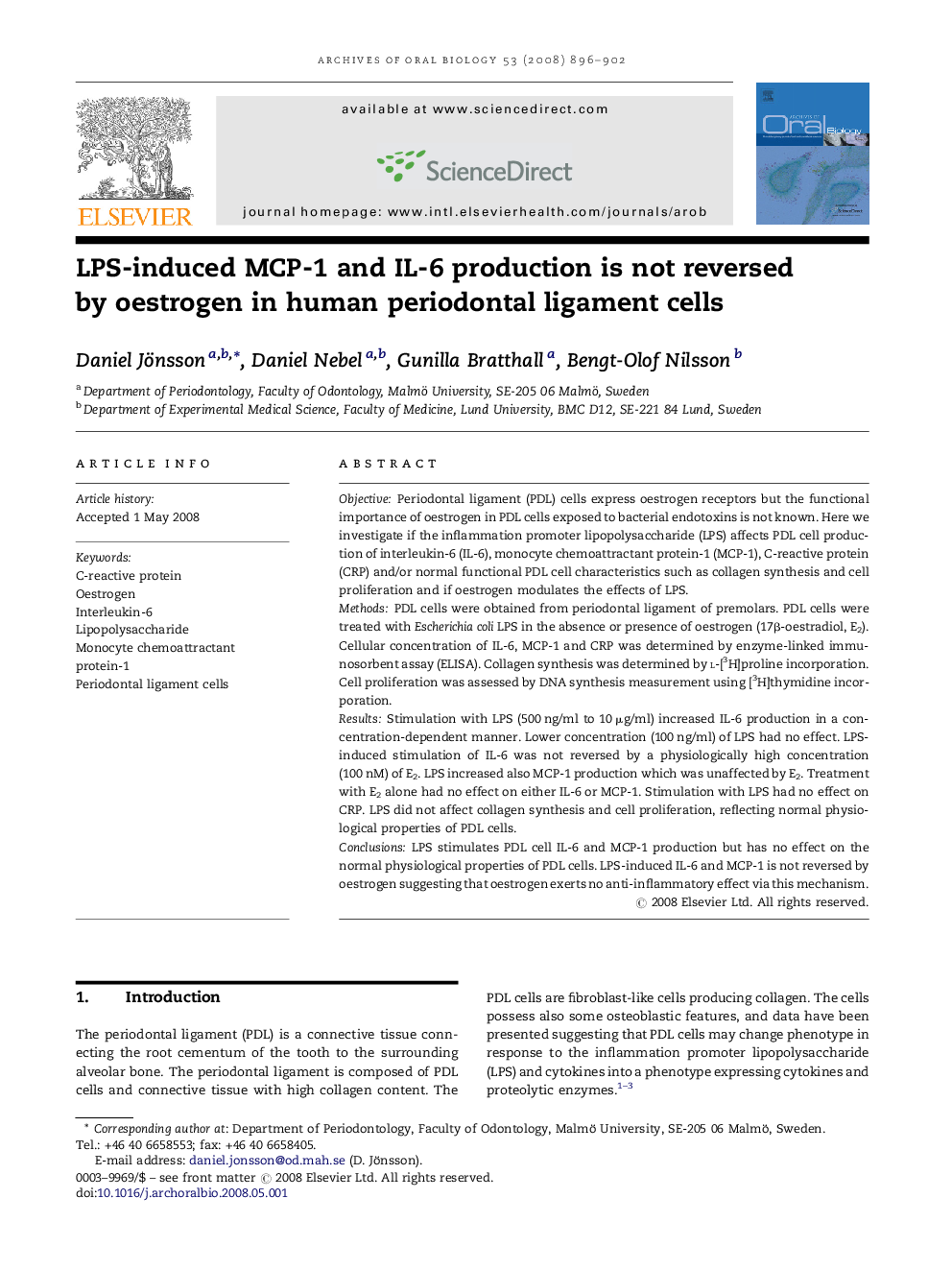| Article ID | Journal | Published Year | Pages | File Type |
|---|---|---|---|---|
| 3121799 | Archives of Oral Biology | 2008 | 7 Pages |
ObjectivePeriodontal ligament (PDL) cells express oestrogen receptors but the functional importance of oestrogen in PDL cells exposed to bacterial endotoxins is not known. Here we investigate if the inflammation promoter lipopolysaccharide (LPS) affects PDL cell production of interleukin-6 (IL-6), monocyte chemoattractant protein-1 (MCP-1), C-reactive protein (CRP) and/or normal functional PDL cell characteristics such as collagen synthesis and cell proliferation and if oestrogen modulates the effects of LPS.MethodsPDL cells were obtained from periodontal ligament of premolars. PDL cells were treated with Escherichia coli LPS in the absence or presence of oestrogen (17β-oestradiol, E2). Cellular concentration of IL-6, MCP-1 and CRP was determined by enzyme-linked immunosorbent assay (ELISA). Collagen synthesis was determined by l-[3H]proline incorporation. Cell proliferation was assessed by DNA synthesis measurement using [3H]thymidine incorporation.ResultsStimulation with LPS (500 ng/ml to 10 μg/ml) increased IL-6 production in a concentration-dependent manner. Lower concentration (100 ng/ml) of LPS had no effect. LPS-induced stimulation of IL-6 was not reversed by a physiologically high concentration (100 nM) of E2. LPS increased also MCP-1 production which was unaffected by E2. Treatment with E2 alone had no effect on either IL-6 or MCP-1. Stimulation with LPS had no effect on CRP. LPS did not affect collagen synthesis and cell proliferation, reflecting normal physiological properties of PDL cells.ConclusionsLPS stimulates PDL cell IL-6 and MCP-1 production but has no effect on the normal physiological properties of PDL cells. LPS-induced IL-6 and MCP-1 is not reversed by oestrogen suggesting that oestrogen exerts no anti-inflammatory effect via this mechanism.
